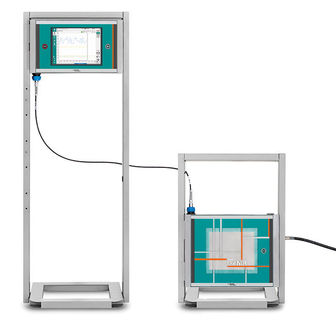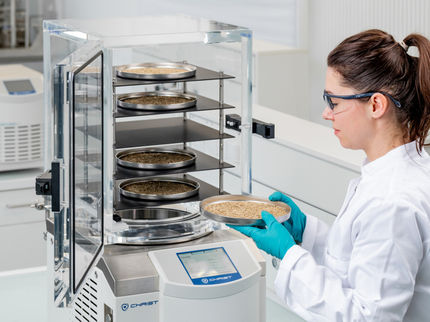Focal segmental glomerulosclerosis
Focal segmental glomerulosclerosis
Classification & external resources
| ICD-10
| N00-N08 (with .1 suffix)
|
| ICD-9
| 581.1
|
| OMIM
| 603278 603965 607832
|
| MedlinePlus
| 000478
|
| eMedicine
| med/2944
|
Focal segmental glomerulosclerosis (FSGS) is a cause of nephrotic syndrome in children and adolescents, as well as an important cause of kidney failure in adults.[1] Minimal change disease (MCD) is by far the most common cause of nephrotic syndrome in children: MCD and primary FSGS may have a similar cause.[1]
The individual components of the name refer to the appearance of the kidney tissue on biopsy: focal - only some of the glomeruli are involved (as opposed to diffuse), segmental - only part of an entire glomerulus is involved (as opposed to global), glomerulosclerosis - refers to scarring of the glomerulus (a part of the nephron (the functional unit of the kidney))
Classification
Depending on the cause it is broadly classified as
- Primary, when no underlying cause is found; usually presents as nephrotic syndrome
- Secondary, when an underlying cause is identified; usually presents with kidney failure and proteinuria. This is actually a heterogeneous group including a myriad causes such as
There are many other classification schemes also.
Pathologic variants
Five mutually exclusive variants of focal segmental glomerulosclerosis may be distinguished by the pathologic findings seen on renal biopsy:[2]
- Collapsing variant
- Glomerular tip lesion variant
- Cellular variant
- Perihilar variant
- Not otherwise specified (NOS) variant.
Recognition of these variants may have prognostic value in individuals with primary focal segmental glomerulosclerosis (i.e. where no underlying cause is identified). The collapsing variant is associated with higher rate of progression to end-stage renal disease, whereas glomerular tip lesion variant has low rate of progression to end-stage renal disease in most patients.[2] Cellular variant shows similar clinical presentation to collapsing and glomerular tip variant but has intermediate outcomes between these two variants. However, because collapsing and glomerular tip variant show overlapping pathologic features with cellular variant, this intermediate difference in clinical outcomes may reflect sampling bias in cases of cellular focal segmental glomerulosclerosis (i.e. unsampled collapsing variant or glomerular tip variant). The prognostic significance of perihilar and NOS variants has not yet been determined. The NOS variant is the most common subtype.[2]
Causes
There are currently several known genetic causes of the hereditary forms of FSGS.
- The first gene involved with this disorder is ACTN4, which encodes alpha-actinin 4. This protein crosslinks bundles of actin filaments and is present in the podocyte. Mutations in this protein associated with FSGS result in increased affinity for actin binding, formation of intracellular aggregates, and decreased protein half-life. While it is unclear how these effects might lead to FSGS there are a number of theories. Firstly, protein aggregation may have a toxic effect on the podocyte. Secondly, decreased protein half-life or increased affinity for actin binding may alter actin polymerization and thereby affect the podocytes cytoskeletal architecture.[3]
- A second gene associated with FSGS is TRPC6, which encodes a member of the canonical family of TRP channels. This family of ion channels conduct cations in a largely non-selective manner. As with ACTN4, TRPC6 is expressed in podocytes. While TRP channels can be activated through a variety of methods, TRPC6 is known to be activated by phospholipase C stimulation. There are at least 6 mutations in this channel, located throughout the channel. At least one of these mutations, P112Q, leads to increased intracellular calcium influx. It is unclear how this might lead to FSGS, though it has been proposed that it may result in alteration of podocyte dynamics or podocytopenia.[3]
- Another gene known to be involved in hereditary forms of FSGS is the p130(Cas) ligand. The mouse homologue of this protein, CD2, is located in podocytes where it interacts with fyn and synaptopodin. Mutations in this gene associated with FSGS occur at splice sites and lead to altered protein translation. This has been theorized to result in altered actin binding and, thus, alteration of the cytoskeletal podocyte architecture.[3]
- Mutations in the NPHS2 gene, which codes for the protein called podocin, cause a recessive form of FSGS. An affected individual has two mutant copies of the NPHS2 gene, in contrast to ACTN4 and TRPC6 mediated forms of disease, which are dominant and require only one mutant copy of the gene. NPHS2-mediated FSGS is resistant to treatment with steroids.
Diagnosis
Symptoms and signs
In children and some adults, FSGS presents as a nephrotic syndrome (which is characterized by edema (associated with weight gain), hypoalbuminemia (low serum albumin (a protein) in the blood), hyperlipidemia and hypertension (high blood pressure)). In adults it may also present as kidney failure and proteinuria, without a full-blown nephrotic syndrome.
Tests
Differential diagnosis
Treatment
- Salt restriction and diuretics (water pills), such as furosemide, for edema
- Antihypertensives (especially ACEIs) - if the blood pressure is too high
- treat present hyperlipidemia (e.g. statins, fibrates)
- Corticosteroids, such as prednisone - based on the clinical judgment of physician (no broad consensus/guideline)
- Cytotoxics, such as cyclophosphamide may be used to induce remission in patients presenting with FSGS refractory to corticosteroids, or in patients who do not tolerate steroids.
- Plasmapheresis - blood cleansing using a machine to remove the patient's blood plasma and replacing it with donor plasma.
- None - sometimes none of the above works and the patient will required dialysis with possibly later transplantation of a new kidney.
References
- ^ a b Kumar V, Fausto N, Abbas A (editors) (2003). Robbins & Cotran Pathologic Basis of Disease, 7th, Saunders, pp. 982-3. ISBN 978-0-721-60187-8.
- ^ a b c Thomas DB, Franceschini N, Hogan SL, Ten Holder S, Jennette CE, Falk RJ, Jennette JC. Clinical and pathologic characteristics of focal segmental glomerulosclerosis pathologic variants. Kidney Int. 2006 Mar;69(5):920-6. PMID 16518352
- ^ a b c Mukerji N, Damodaran TV, Winn MP (2007). "TRPC6 and FSGS: The latest TRP channelopathy". PMID 17459670.
- Kidcomm An online resource for parents dealing with childhood kidney diseases (FSGS, Nephrotic Syndrome and others)
- FSGS Clinical Trial An NIH sponsored nation-wide Clinical Trial for patients suffering from FSGS
|







